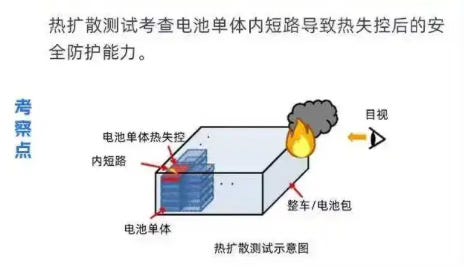Inside China’s New ‘No Fire, No Explosion’ EV Battery Mandate
Every week, the battery landscape shifts in fascinating ways — this one is no different.
Welcome back to another edition of my newsletter! - Week 16 2025
This week, I’ll discuss China's new EV battery safety standards. China raised the bar for EV battery safety. It will push some companies to innovate.
Summary
The highlight of the week: new EV battery safety standards in China
Battery Industry Pulse: Weekly Roundup.
The highlight of the week: new EV battery safety standards in China
In April 2025, China’s Ministry of Industry and Information Technology (MIIT) introduced new mandatory national safety standards for electric‑vehicle batteries.
It’s known as GB 38031‑2025, “Safety Requirements for Power Batteries of Electric Vehicles,”.
This regulation replaces the 2020 framework with more stringent protections. Its primary goal is to prevent fires and explosions in the event of internal thermal runaway.
For the first time, the standard explicitly mandates that batteries must remain fire‑ and explosion‑free when an internal short circuit triggers thermal runaway.
Here are the key revisions:
Thermal Propagation Test: batteries must not catch fire or explode (alarm is still required). Additionally, any smoke generated must not harm passengers. A thermal event warning signal must be provided at least 5 minutes before fire or explosion. Previously, only the warning signal was required. The new national standard adds "internal heating" to the test method. Internal temperatures must stay under 60 °C.
New Bottom Impact Testing: evaluates the protection capability of the battery bottom against impacts.
Parameters:
30mm diameter impact head, 150J energy, 3 impacts.
Pass Criteria:
No leakage, casing rupture, fire, or explosion. Insulation resistance must meet requirements.
New Safety Test after fast charging cycle: the goal is to examine the safety of the EV battery after long-term charging cycles. Battery cells must charge from 20% to 80% SOC within ≤15 minutes. After 300 fast-charge cycles, the cells must pass an external short-circuit test (no fire or explosion).
The objectives of the Chinese government are:
Safety First: Protect the consumer's lives and property.
Technology Advancement: Promote advanced safety technologies.
Global Alignment: Strengthen standards for industry growth and international trade.
These new safety standards will apply only to EV batteries.
It becomes effective from July 1, 2026, for new vehicles. Existing vehicles must provide proof of compliance by 1 July 2027.
According to industry experts, the mainstream battery manufacturers are already prepared for the new standard.
CATL launched its first-generation "No Thermal Propagation" (NP) technology in 2020, achieving "no fire, no explosion" six years ahead of the new rules. Its NP3.0 technology aims to eliminate smoke during thermal runaway.
However, small and mid-size companies could be in danger. In China, industry estimates show that the cost of battery systems that meet the new regulations will increase by about 15%-20%. They will need to innovate to survive. It could lead to market consolidation in China.
While the regulation addresses thermal runaway caused by internal factors (e.g., manufacturing defects), it does not guarantee fire prevention in extreme scenarios like high-speed collisions.
Now, let’s look at this week's battery market developments.
Battery Industry Pulse: Weekly Roundup
Raw Materials
Components
Battery
LG-led consortium to withdraw from $7.7B battery project in Indonesia
CATL and China Logistics step up partnership in comprehensive logistics, green tech innovation
South Korean Battery Firms Rethink JVs with Chinese Companies Amid Geopolitical Tensions
Hyundai launches task force to develop in-house EV batteries
Nyobolt raises $30 million as demand for high-power energy solutions surge with AI growth
LG Energy Solution found over 580 infringements on its patents
Hyundai Mobis develops EV battery with built-in fire extinguishing agent
China's power battery installations in March 2025 surge over 60% both YoY, MoM
Battery Recycling
Passengers EVs
Other EVs
Don’t hesitate to leave a comment or reply to this email to share your feedback. My goal is to make the best newsletter for you.







Is China’s new Regulation is more stringent than the USA?
Thermal Runaway at Moss Landing lithium bank battery fire , one of the largest facility in the US, didn’t seem to be well regulated as there were over 4 major fires since they started.